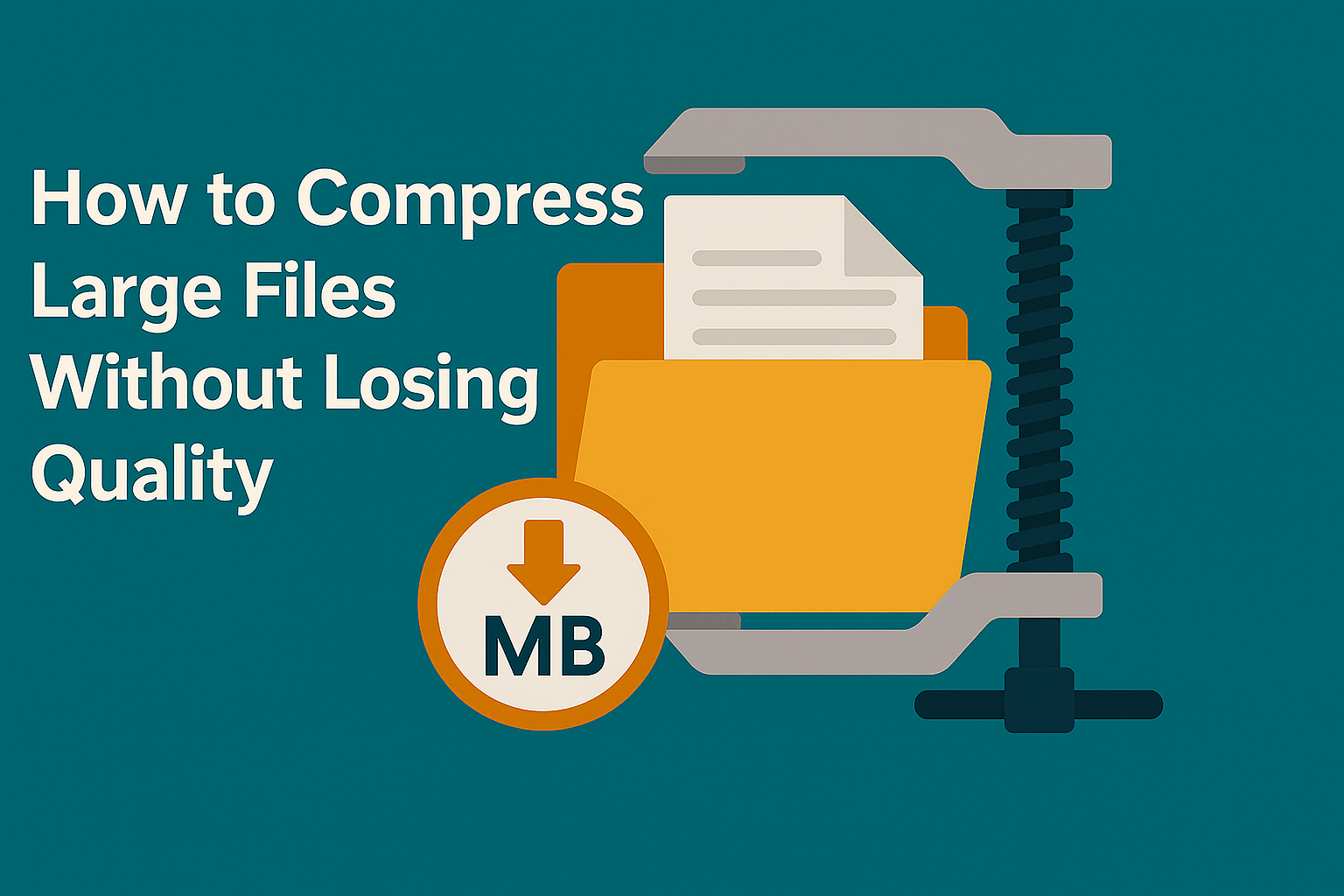In today’s digital world, file sizes are growing rapidly — from high-resolution images and HD videos to large PDF documents and software installers. While we enjoy better quality and detail, the downside is increased storage use, longer upload/download times, and difficulty sharing large files online.
That’s where file compression comes in. Whether you’re a student, content creator, business owner, or just someone trying to send a file over email, knowing how to compress large files without losing quality can save you a lot of hassle.
In this post, we’ll explore what file compression is, types of compression, tools you can use, and smart tips to reduce file size while maintaining quality.
What Is File Compression?
File compression is the process of reducing the size of a file by removing redundant data, encoding information more efficiently, or packaging files in a more compact format. The main goal is to reduce file size without affecting the original file’s content or quality.
There are two types of compression:
- Lossless Compression: Reduces file size without losing any quality. The original file can be restored exactly.
- Lossy Compression: Shrinks file size by removing some data — this can affect quality, especially in images, audio, or video files.
If you want to compress files without losing quality, always use lossless compression tools or formats.
Common File Types That Can Be Compressed
- Images (JPG, PNG, TIFF, BMP)
- Videos (MP4, MOV, AVI)
- Audio (MP3, WAV, FLAC)
- Documents (PDF, DOCX, PPTX)
- Archives (ZIP, RAR, 7Z)
- Software/Apps (.exe, .apk, etc.)
How to Use our Image Compressor Tool?
Follow these quick and easy steps:
Visit the Tool
Go to the Image Compressor page on File-Converter.site.
Upload Your Image
Click the “Choose File” or “Upload Image” button.
Preview and Download
Click “Download” to save the optimized image to your device
Best Practices to Reduce File Size Without Losing Quality
- Choose the Right Format
WebP for images, MP4 for videos, and FLAC for lossless audio. - Use Compression Settings Carefully
Always select “lossless” mode or adjust settings to retain quality. - Batch Compress Files
Save time by compressing multiple files at once using a batch tool or script. - Avoid Double Compression
Compressing an already compressed file can sometimes increase the size or reduce quality. - Use Online Tools with Care
Ensure they don’t automatically apply lossy compression. Check for settings or advanced options.
Try It Yourself – Compress Files Online for Free
You can compress files online without installing any software using tools like:
- Compress PDFs, images, videos, and more
- Easy drag-and-drop interface
- Secure and fast
- No watermark or signup required
Final Thoughts
Compressing large files without losing quality is easier than ever thanks to smart algorithms and modern tools. Whether you’re a professional designer or just trying to send a large email attachment, using the right compression method can save time, storage, and frustration.
Always remember: Lossless compression is your best friend when you care about quality. And when in doubt, head over to File-Converter.site to get the job done quickly and efficiently.

